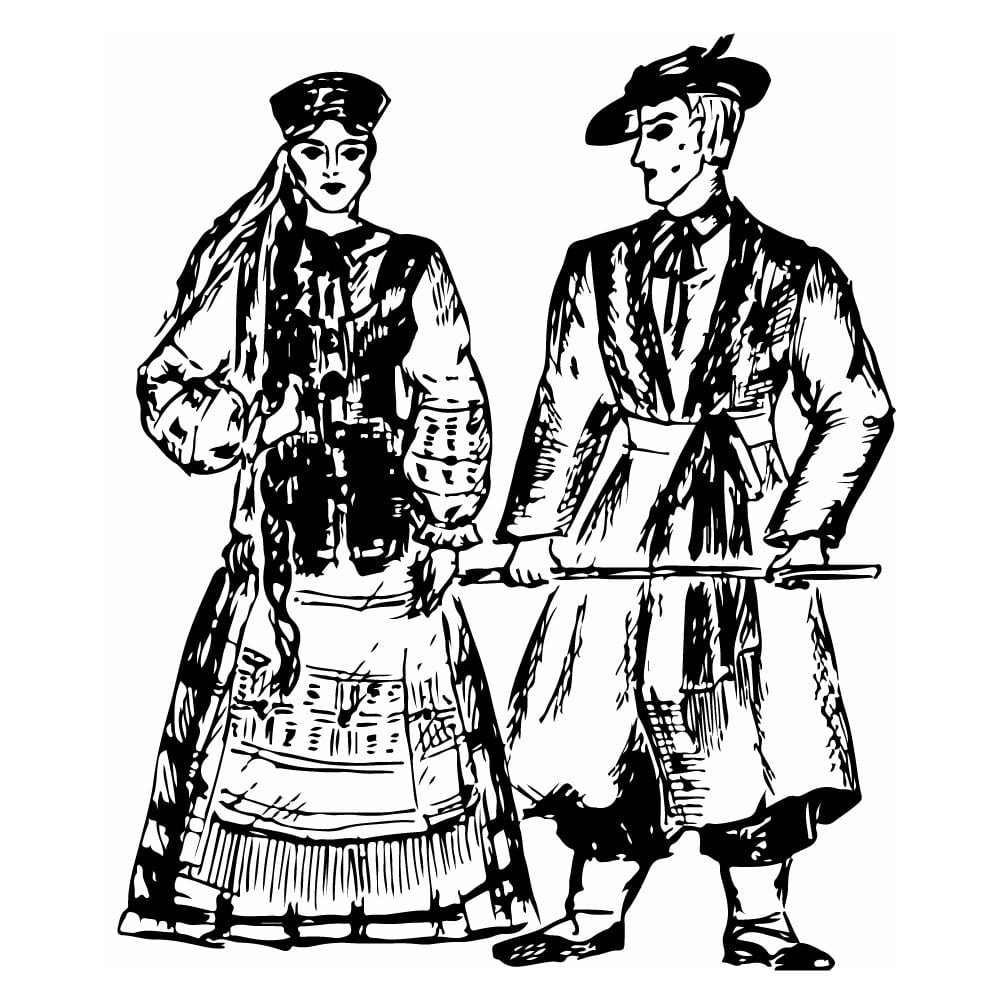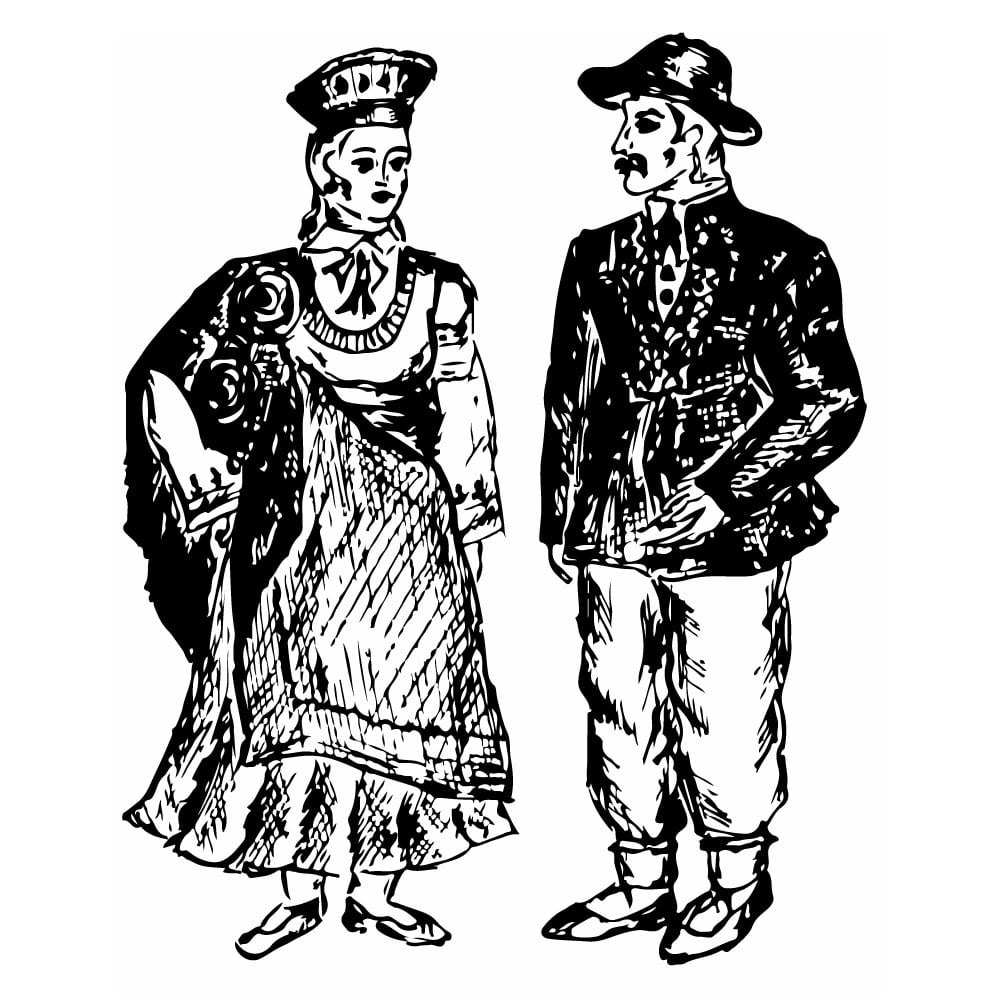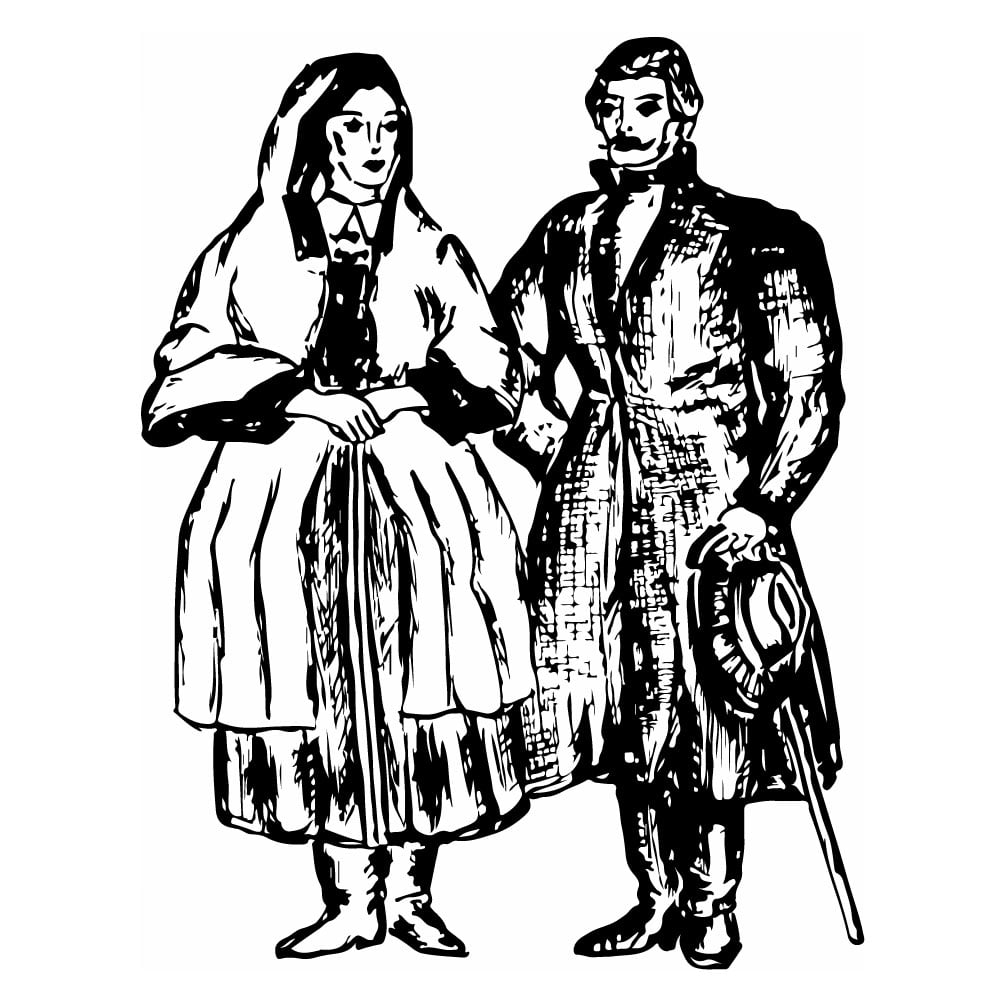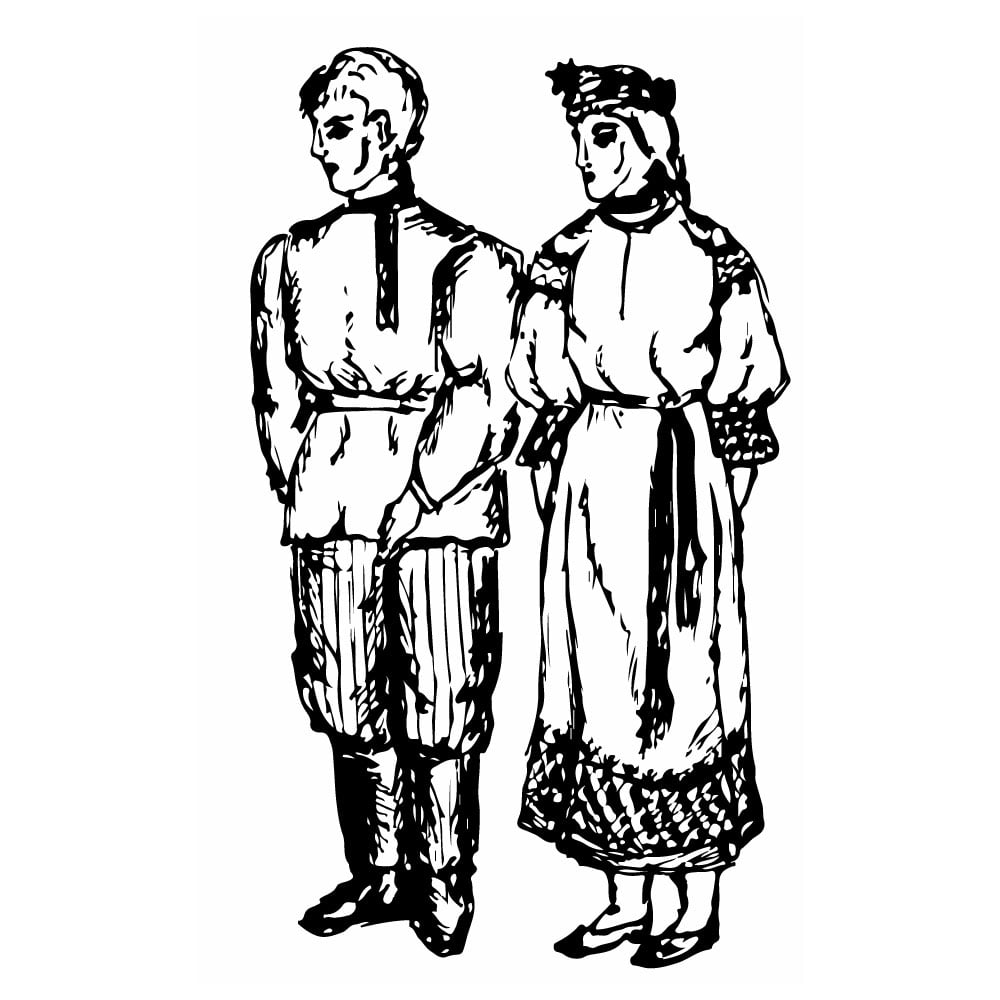Lithuanians
| Population | 3,675,000 |
| Language group | Baltic languages |
| Language | Lithuanian |
| Region | Lithuania |
| Religion | Christianity (Roman Catholics, Lutherans) |
*Population estimates for 1994
Lithuania is situated in the northwestern part of the East European plain. It borders on Poland in the Southwest. In the West it is washed by the Baltic Sea.
Lithuania is the country of beautiful and versatile nature. Plains constitute the topography of the country. The one who visits this country for the first time is charmed by the green-blue realm of forests and water, bird songs and fragrance of flowers.
Long ago, the territories adjacent to the east coast of the Baltic Sea between the Vistula and the Daugava (Zapadnaya (West) Dvina) rivers were inhabited by the Baltic tribes or the Lett-Lithuanians (as they were called sometimes). In ancient Lithuania, their nominal descendants were the Aukshaits and Zhemaits, besides the West Lithuanians, Prussians, Yatvyags, Ikursh, Sels and Latgals. All people groups were kin to each other by language, culture, and religion.
In the tenth to twelfth centuries, there could be seen the formation of the first Lithuanian principalities and early feudal formations. It was exactly that time when the first written records about Lithuania and its peoples were dated: in West-European chronicles (1009) and East-Slavic ones (1040). At the same time as a result of the merging of Aukshait and Zhemait tribe formations, the main body of the Lithuanian nationality was born. Later, this kernel was enlarged by the Yatvyags (Suduvs), Prussians and by the Zemgals, Kurish, and Sels.
By 1240 a feudal state, the Great Princedom of Lithuania, was founded. In the thirteenth century the main traits of the Lithuanian nationality were outlined. In the thirteenth-fifteenth centuries the peoples of the Great Princedom of Lithuania repelled the German feudal aggression. During the battle of Grunwald in 1410 the Lithuanian, Polish and Russian forces smashed the troops of the Teutonic Order.
In the years of 1558-1583 the country took part in the Lithuanian war against Russia. According to the Lublin Union, Lithuania united with Rzecz Pospolita (Old Poland) in 1569.
In I940 the country was annexed to the USSR as the Lithuanian Soviet Socialist Republic. During perestroika and glasnost times Lithuania was among the first to drop out of the USSR and now it is a separate independent state.
In Europe, Lithuania enjoys great popularity as a country producing hand woven fabrics which are characterized by a wide range of pattern and color harmony. Table cloths, carpets, coverlets, and famous Lithuanian girdles are especially attractive. For the Lithuanians, these objects are tightly connected with deep-rooted ancient folk traditions and customs and are considered as the symbol of happiness, love, friendship and prosperity.
Festive national garments made of linen, wool, and semi-wool cloth are notable for the beauty of soft shades and refined cut.
Nowadays the national Lithuanian clothes are worn neither in big cities nor in small villages, but for holidays. Instead, they are mostly used by tens of thousands of Lithuanian amateur folk singers and dancers.
The Lithuanian folk songs (the dannas) are famous worldwide for their melodiousness and spiritual lyricism. The folk song and dance festivals are held in Lithuania every year. National fairy tales, legends, sayings and proverbs come from ancient times.
The creative work of the people is manifested in woodcarving and architecture, ceramics, leather stamping, amber processing, root and straw plait.
For more than half of a millennium, the Lithuanian people have been faithful to the Catholic Church. In I987, the Lithuanian Catholic Church celebrated its 600th anniversary.
The Lithuanians were converted to Christianity several centuries later than the neighboring European peoples. Being in the grip of the Slavic East and ruthless western crusader orders, the Lithuanian ancestors at the beginning of the thirteenth century rounded the independent state. These peculiar political and geographical circumstances account for the fact that the Lithuanians have long time been resisting the conversion attempts done by those who had threatened them with fire and sword and tried to enslave them. Still, in spite of all that, the Lithuanians got involved in the stream of changes which began in Western Europe at that time.
Christian temples were the first cultural centers in Lithuania. In 1570 in Vilnius Jesuit monks rounded their well-known Collegium, which in 9 years became the first university in the country. They began to publish religious books, open drug-stores, set up clubs and fraternities and so on. Merkelis Gedraitis, the Zhemait archbishop, was the man who personally catechized the people in Lithuanian language. During hard times of Russian tsarist reaction his disciple Moteus Valanchus spread the catechism among people thus helping children to read and write in their own native language.
The Soviet administrative regime originated during the time of Stalin and hampered the development of religion; it also had a bad influence on the Lithuanian congregation. For several decades the believers had been excluded from social life. Their activity did not stretch beyond the church walls or cemetery fence. Every third Lithuanian priest and four out of five bishops were arrested and sentenced to exile. The socialist state appropriated hundreds of churches and printing houses. In Vilnius they closed down St. Yokubas’ and St. Cotrin’s Cathedrals. In Kaunas St. Trinity Church was also closed down. Resurrection church was turned into a factory while the best monument of architecture, St. Kazimir’s church, was turned into the museum of atheism.
The Catholic church was the one that suffered most. During the years of Stalinist terror that followed the Second World War many Catholic churches were closed. However, the Orthodox churches continued to operate. In Vilnius until 1948 there were 33 Catholic churches open while today there are only 12. In spite of all this, eight Orthodox churches operated, even thought 80% of all believers were Catholics and only 5-6% were Orthodox.
During the period of “Great Thaw” that followed Stalin’s death, those who survived came back home. They returned to see the closing down of churches, destruction of roadside crosses, chapels, church masterpieces and icons.
Nowadays, there has been great revival of church activity in Catholic communities. The Catholic church regained its three national sacred things: St. Stanislav’s Cathedral in Vilnius, Virgin Church in Klaipeda and St. Kazimir’s Church.
The Catholic youth brings to life their church community called “Ateitinikai” (the Lithuanian for “people of the future”). Young ladies revive their “Karitas” (a word meaning “love”) organization aimed at helping orphans, the sick and disabled.
This is Ad 1





